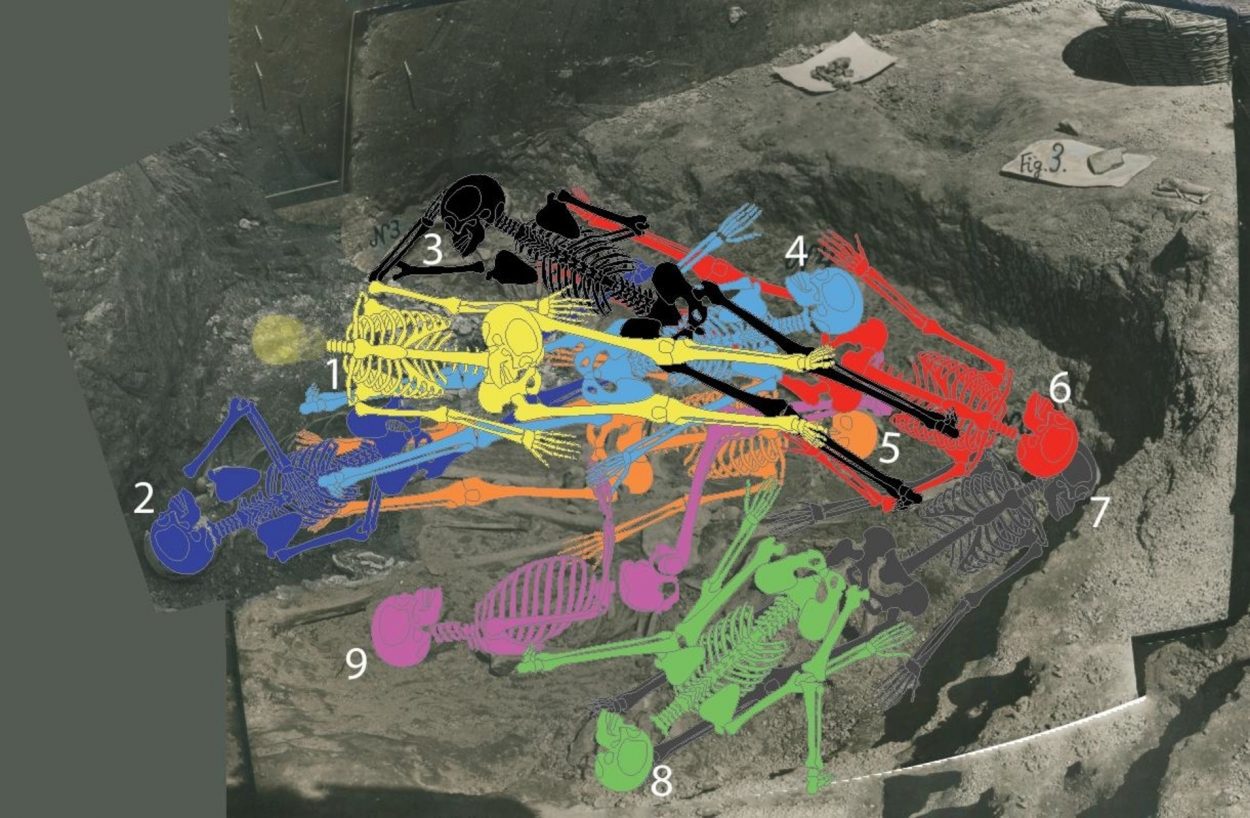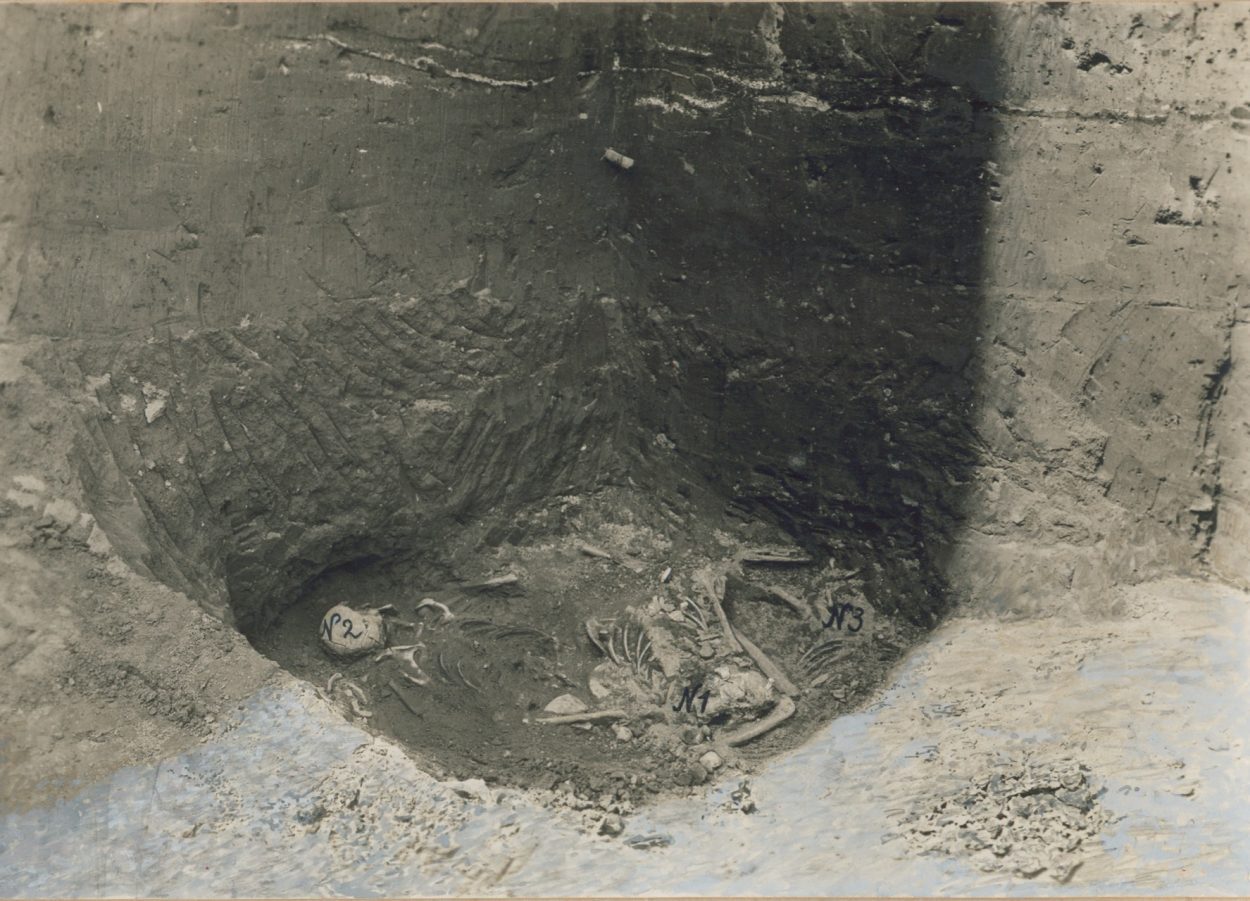In 1931, Serbian archaeologist Miloje Vasić discovered a pit containing human skeletal remains whilst researching the Vinča-Belo Brdo archaeological site in the suburbs of Belgrade, Serbia.
In his diary, Vasić remarked the discovery as “an ossuary with a dromos”, in which 9 human skeletons were found.
Interpretations have not excluded that it was a collective burial, but, based on a recent analysis of the original photo documentation, the position of the deceased has been called into question as to whether the burial was a Neolithic crime scene.
Vinča-Belo Brdo site
The multi-layered site of Vinča-Belo Brdo (after which a Neolithic culture in Southeastern Europe is named) is situated some 14 km from central Belgrade. It was inhabited from the Early Neolithic in the 6th millennium BC (Starčevo culture) throughout the Middle and Late Neolithic (Vinča culture), Copper Age, Bronze Age, Iron Age, until the Medieval period.
The first archaeological excavations took place in 1908 until 1934 (with interruptions due to the Balkan Wars and World War II). After that, excavations continued from 1978 to 1986, with further studies under the direction of N. N. Tasić from 1998 to present-day.
The site has revealed only a few finds from the Starčevo period, therefore, the tomb with the dromos is of particular interest as it was constructed by the Starčevo culture.
The first anthropological analysis of the 9 skeletons was performed in 1937 by anthropologist I. Schwidetzky, however, after World War II only skull fragments from the burials have survived. After more than 70 years, they will be anthropologically examined again by researchers from the Laboratory of Bioarchaeology, Faculty of Philosophy at the University of Belgrade.

In a study published in the journal Documenta Praehistorica XLVIII, the anthropological analysis has revealed that there was actually 12 adults in the burial instead of 9, and that this likely represents a Neolithic crime scene, rather than the typical Starčevo burial rite.
Two female skulls and one male skull have been identified, whilst the sex for the remaining 9 skulls is inconclusive. Only one individual was a young adult (15-18 years old), whilst others were adults (20-40 years). The average height of these individuals was 161 cm which was roughly the average stature of Early Neolithic people in this region.
Traces of violent behaviour
The typical mortuary practice of the Starčevo culture involves the deceased being buried on the left or the right side in a crouched (fetus) position. However, the photographic evidence reveals that this was not the case in the burial, suggesting either a violent death or that the deceased were buried in a disrespectful manner. This is evidenced by traces of blunt force trauma detected on two of the skulls.
The photographic evidence also supports this as it shows that the left leg from one skeleton was placed on its back (which was not possible without dismembering the leg), whilst the right leg was contracted with a broken femur.
Based on absolute dates, it has been confirmed that the tomb belongs to the Starčevo culture, and the nine dated individuals correspond to a chronological range between 5700 and 5500 BC. Although some of the deceased were buried at the same time, this is not a simultaneous burial of 12 individuals, further adding to the mystery as to whether this was indeed a Neolithic crime scene.
Written by Maja Miljević-Đajić
Header Image Credit : Maja Miljević-Đajić





